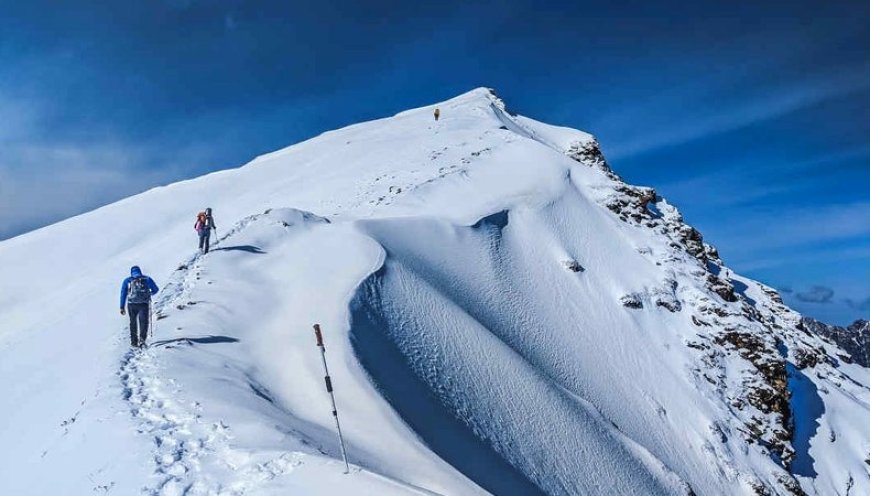Ultimate Guide to Sar Pass Trek: Everything You Need to Know
the Sar Pass trek stands as a testament to the natural beauty and adventurous spirit of the Himalayas. This iconic trek, known for its breathtaking views and challenging terrain

Nestled in the majestic Parvati Valley of Himachal Pradesh, the Sar Pass trek stands as a testament to the natural beauty and adventurous spirit of the Himalayas. This iconic trek, known for its breathtaking views and challenging terrain, has become a pilgrimage of sorts for avid trekkers seeking an exhilarating experience in the lap of the mountains.
Introduction to Sar Pass Trek
The Sar Pass trek, named after a small frozen lake at its summit resembling a lake in the local dialect, offers a thrilling journey through dense pine forests, lush meadows adorned with wildflowers, and snow-clad slopes that define the landscape. Situated at an altitude of approximately 13,800 feet above sea level, this trek is not just about conquering heights but also about immersing oneself in the serene beauty of the Himalayan wilderness.
Planning Your Sar Pass Trek Adventure
Before embarking on the Sar Pass trek, meticulous planning is essential to ensure a safe and fulfilling experience. The trek typically spans over 5-6 days, covering a distance of approximately 35 kilometers, starting from the village of Kasol and culminating at the Sar Pass summit. Here’s a detailed breakdown of what you need to consider:
-
Best Time to Visit: The ideal time for the Sar Pass trek is from May to October when the weather is relatively stable, and the trails are accessible. During these months, the region experiences pleasant daytime temperatures and clear skies, making it conducive for trekking.
-
Permits and Permissions: It's crucial to obtain any required permits or permissions from local authorities or trekking agencies before starting your journey. This ensures compliance with regulations and helps in organizing your logistics effectively.
-
Fitness and Acclimatization: Due to the altitude and challenging terrain, adequate physical fitness is necessary for participants. Pre-trek conditioning and acclimatization days in Kasol or nearby towns like Manikaran are recommended to minimize the risk of altitude-related issues.
-
Packing Essentials: Essential gear includes sturdy trekking shoes, layered clothing for varying temperatures, a reliable backpack, camping equipment if trekking independently, water and windproof jackets, and sufficient food supplies. It's also essential to carry a first aid kit and any personal medications.
Trek Route and Highlights
The Sar Pass trek offers a diverse range of landscapes and experiences that leave a lasting impression on trekkers:
-
Kasol to Grahan Village: The trek commences from Kasol, a popular starting point known for its scenic charm and vibrant backpacker culture. The trail winds through dense forests of oak and pine trees, eventually leading to the picturesque village of Grahan, where trekkers can interact with the friendly locals and experience the traditional Himachali way of life.
-
Grahan to Min Thach: From Grahan, the trail ascends further through enchanting forests and meadows, with occasional sightings of Himalayan bird species and small streams. The campsite at Min Thach offers panoramic views of the surrounding mountains and serves as a serene spot for overnight camping under the starlit sky.
-
Min Thach to Sar Pass Base Camp: As the trek progresses, the landscape transitions into alpine meadows dotted with vibrant flowers during the summer months. The Sar Pass base camp, situated at an altitude of approximately 12,000 feet, provides trekkers with a stunning backdrop of snow-capped peaks and serves as a base for the final ascent to the summit.
-
Sar Pass Summit and Beyond: The final leg of the trek involves a challenging climb to the Sar Pass summit, where trekkers are rewarded with breathtaking panoramic views of the Parvati Valley and nearby mountain ranges. The descent from Sar Pass leads to the quaint village of Biskeri Thach and concludes at Barsheni, from where trekkers can return to Kasol or onward to explore other attractions in Himachal Pradesh.
Cultural Insights and Local Interaction
Beyond its natural beauty, the Sar Pass trek offers opportunities for cultural immersion and interaction with local communities:
-
Local Culture and Traditions: Trekking through remote villages allows trekkers to engage with the indigenous communities of Himachal Pradesh, known for their warm hospitality and rich cultural heritage. Learning about traditional practices, local cuisine, and folk music adds a deeper dimension to the trekking experience.
-
Environmental Conservation: Responsible trekking practices, such as minimizing waste, respecting local customs, and supporting eco-friendly initiatives, are encouraged to preserve the pristine environment of the Himalayas for future generations.
Conclusion
The Sar Pass trek is more than just a physical challenge; it's a transformative journey that offers unparalleled experiences amidst some of the most awe-inspiring landscapes of the Himalayas. Whether you're an experienced trekker or a first-time adventurer, embarking on this trek promises memories that will last a lifetime. So, pack your bags, lace up your boots, and get ready to explore the mystique of Sar Pass, where every step leads to a new adventure in the heart of nature's grandeur
What's Your Reaction?
 Like
0
Like
0
 Dislike
0
Dislike
0
 Love
0
Love
0
 Funny
0
Funny
0
 Angry
0
Angry
0
 Sad
0
Sad
0
 Wow
0
Wow
0


















































